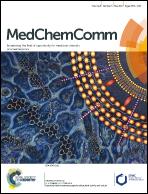Protection effect of intracellular melanin from Lachnum YM156 and Haikunshenxi capsule combination on adenine-induced chronic renal failure in mice†‡
Abstract
This study aimed to elucidate the therapeutic effects of oral administration of intracellular melanin from Lachnum YM156 (LIM) on chronic renal failure (CRF) in mice. The cytotoxicity of LIM was evaluated using the 3-(4,5-dimethylthiazol-2-yl)-2,5-diphenyltetrazolium bromide (MTT) assay. CRF was induced in mice by chronic dietary adenine intake. We have used this intervention to explore the effects of oral treatment with LIM (100 and 200 mg kg−1) in CRF mice. The treatment with LIM alone and a combination of Haikunshenxi capsule (HC) add LIM increased the concentration levels of superoxide dismutase (SOD), catalase (CAT), glutathione peroxidase (GSH-PX), and glutathione reductase (GSH), reduced malonaldehyde (MDA) in the nephridial tissues and also reduced the nephridial levels of tumor necrosis factor (TNF)-α, interleukin-1β (IL-1β), and interleukin (IL)-6, and the activities of inducible nitric oxide synthase (iNOS). Interestingly, the HC and LIM combination produced a higher therapeutic effect than HC alone. The mechanism of the reported salutary effects of LIM in adenine-induced CRF is associated with amelioration of the adenine induced inflammation and oxidative stress. The present findings recommend that LIM is a useful natural product which can be used to enhance the protection function of HC in CRF mice.



 Please wait while we load your content...
Please wait while we load your content...